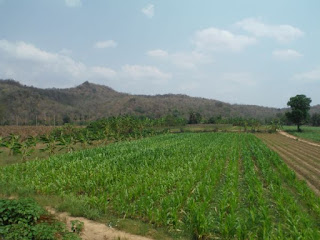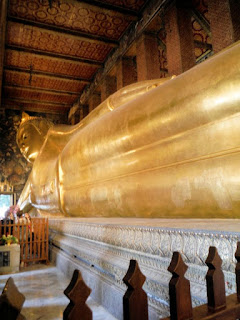The Railway and Bridge(s)
A 415 km railway was to be built including 680 timber trestle bridges.
The Imperial Japanese Army wished to have railway service all the way from Nong
Pladuk, Thailand to Thanbuyuzayat, Burma (now Myanmar). They wished to connect
short sections of rail line and extend the line. The American Civil Engineering
Handbook was used as a guide for the construction.
Beginning in October 1942, the Imperial Japanese Army hoped to
construct the entire thing by August 1943. In reality the rail was not completed until November
1943. There was no real mechanized equipment available. All work was done by
hand.
A Japanese officer said in an interview that they had orders to build the
bridges and rail line. They had to forget that the workers were men, were individuals, and only consider the fact that they had been ordered to finish the
bridge on time. Nothing else mattered. The Japanese carried a certain amount of
scorn for the POWS because they had accepted defeat. The Japanese were educated
to never accept defeat; to refuse submission. The POWS were therefore inferior
and to be scorned.
Another shot of the “Kwai River” Bridge
The bridge was not constructed on the “Kwai River.” There was no Kwai
River in the 1940s. It was built across the Mae Khlong River near 2 tributary
rivers now named maenam Kwae Noi (small river Kwae) and Maenam Kwae Yai (big
river Kwae). The word Kwae just means tributary. I’m not exactly sure how it
came about but the name of that section of the river was changed to the Kwae
(Kwai) in 1960.
The 11 span bridge was dismantled in Java in 1942 and brought here to
this location and re-built it on concrete columns over a span of about 7 months. Java today is an island in Indonesia. At the time Indonesia was known as the Dutch East Indies. Holland was
already under German occupation and not helpful to its colony stopping the
Japanese invasion. Many bridges and roads had been built by the Dutch and at
least one of them was taken from Java to Thailand. I can’t seem to find out
exactly where the taken bridge had been located.
Here's just a few historical tidbits:
The Japanese came up with a creative way to transport the concrete to
construct the supports for the bridge. They pre-mixed cement, sand and gravel
and transported the mix in wooden barrels. It’s possible that the Thai-Burma
Railway was the first use of pre-mixed concrete
Because the rail line and bridges were built too hastily, the rail
system never achieved what it was meant to do- handle 3000 tons daily. In
reality, only 600 tons of equipment could be transported daily towards the
Burma front. Still, the actual construction of the Thai-Burma railway was an
extraordinary engineering feat. 80 km of the original line still exists. The
rest has been lost to the jungle.
There were actually 2 bridges near the location of the famous Kwai River Bridge. Originally a temporary wooden trestle
bridge was constructed in February 1943 and when the steel bridge from Java was
put back together it was constructed near the original temporary wooden bridge.
Both bridges were attacked numerous times by Allied Forces. The steel bridge
still exists today though two of the steel sections were damaged by the Allied
bombings and were rebuilt.
The wood bridge was not destroyed as depicted in the movie. In late
1944, raids began to damage both bridges on accession. But in 1945 both bridges
were temporarily knocked out of service. The wooden (service bridge) was
destroyed by aerial raids on April 2, 1945.
The POWS and Asian Laborers
Signage at the museum indicated that by mid-1942, there were several 100,000
men POWS and Asian conscripted laborers working on the railway. In reality, the number could have been closer to
250,000 Asian laborers.
There were 55 prison camps along the rail line but only 64,000 men at
one point. Additional men were recruited through false promises or good pay.
Other men were recruited by force.
Men battled horrible conditions, starvation diets, insects, and disease in addition to abuse by their guards. Not all of the camps were equally horrible. The camps at Wangpo and
further north were the worst. One British solder wrote that there were so many
flies in Wangpo camp that each POW had to kill 100 flies every night.
The Deaths
The “official” numbers reported vary. The total number who died is not really known but here are the best
guesses:16,000 POWS died and were buried along the railway. Another 100,000
estimated civilian Asian laborers died.
At the museum these numbers were listed on one chart.
Nationality
|
Total workforce
|
Total died
|
Dutch
|
17,900
|
2782
|
American
|
686
|
131
|
Burmese
|
90,000
|
40,000
|
Australian
|
13.004
|
2802
|
Malay
|
75,000
|
42,000
|
Some numbers on a memorial plaque at the river vary from these numbers
taken from the museum. For example, the memorial plaque lists 356 American
dead.
The American dead were returned to the US. The others were transferred
from camp burial grounds to 3 cemeteries: including the one at Kanchanaburi.


























































